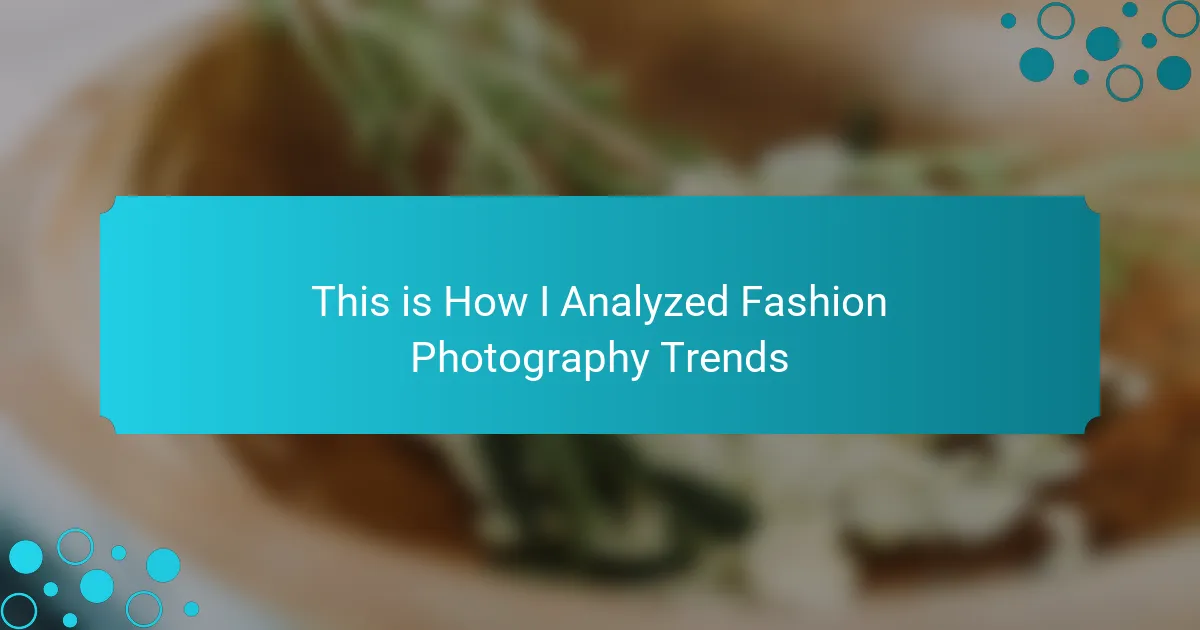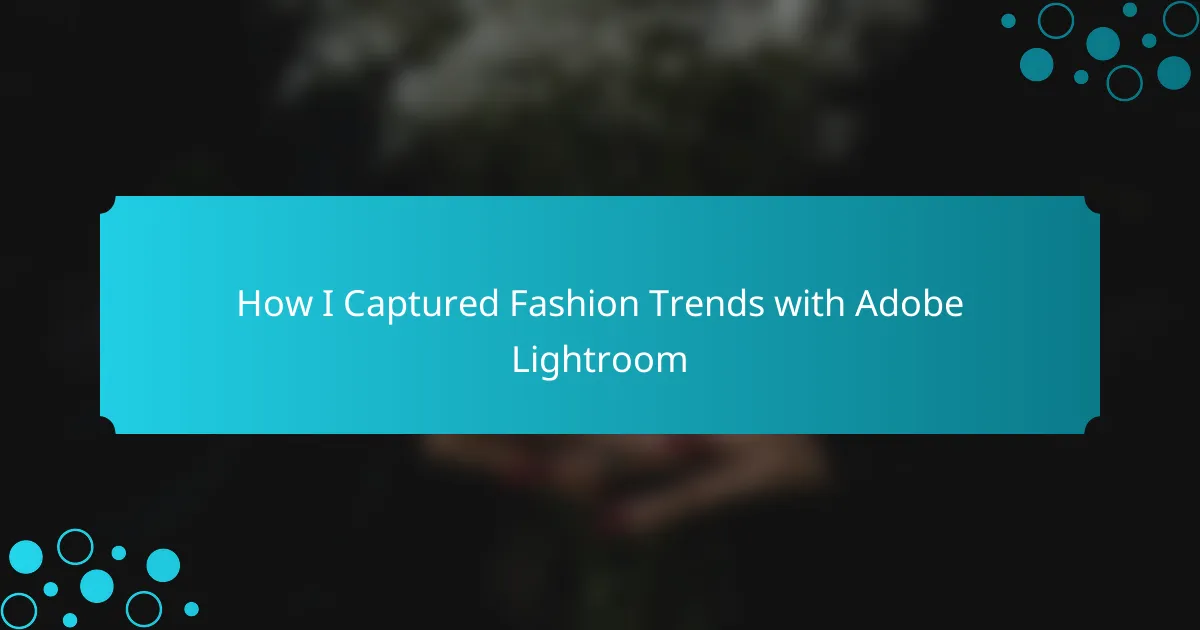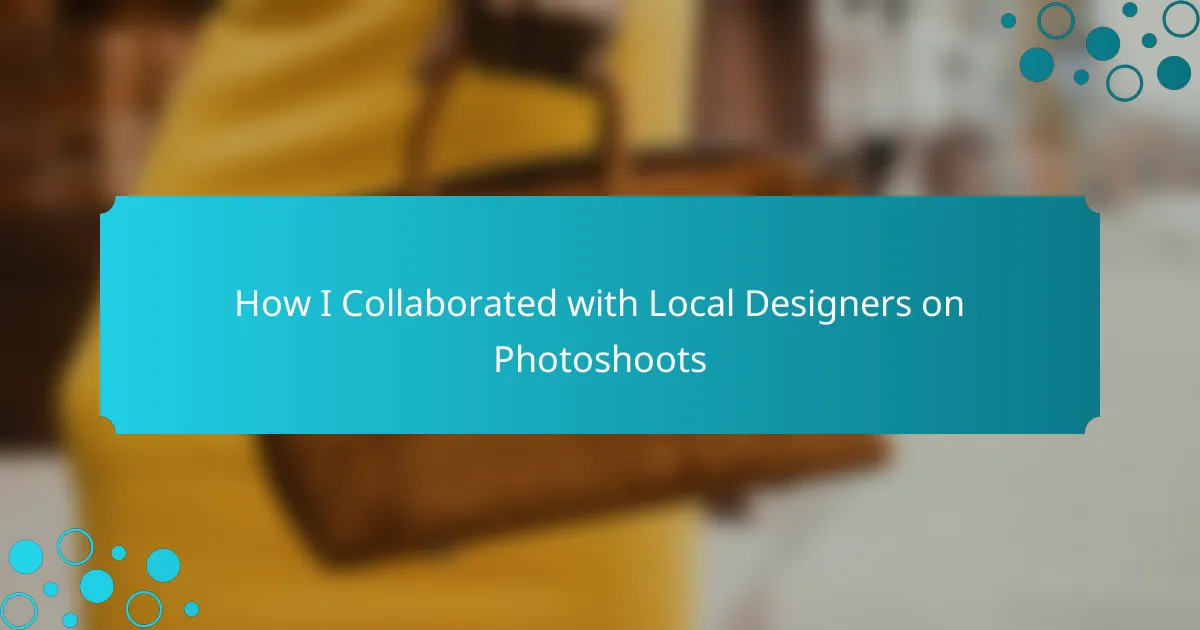Key takeaways
- Composition in fashion photography tells a story and guides viewer focus through techniques like the rule of thirds and negative space.
- Angles and perspectives significantly influence the mood and emotional impact of an image; experimenting can yield dynamic results.
- Evaluating elements such as balance, harmony, and lighting is essential for creating striking, engaging shots.
- Framing and the use of leading lines enhance depth, drawing attention to the model and highlighting clothing effectively.
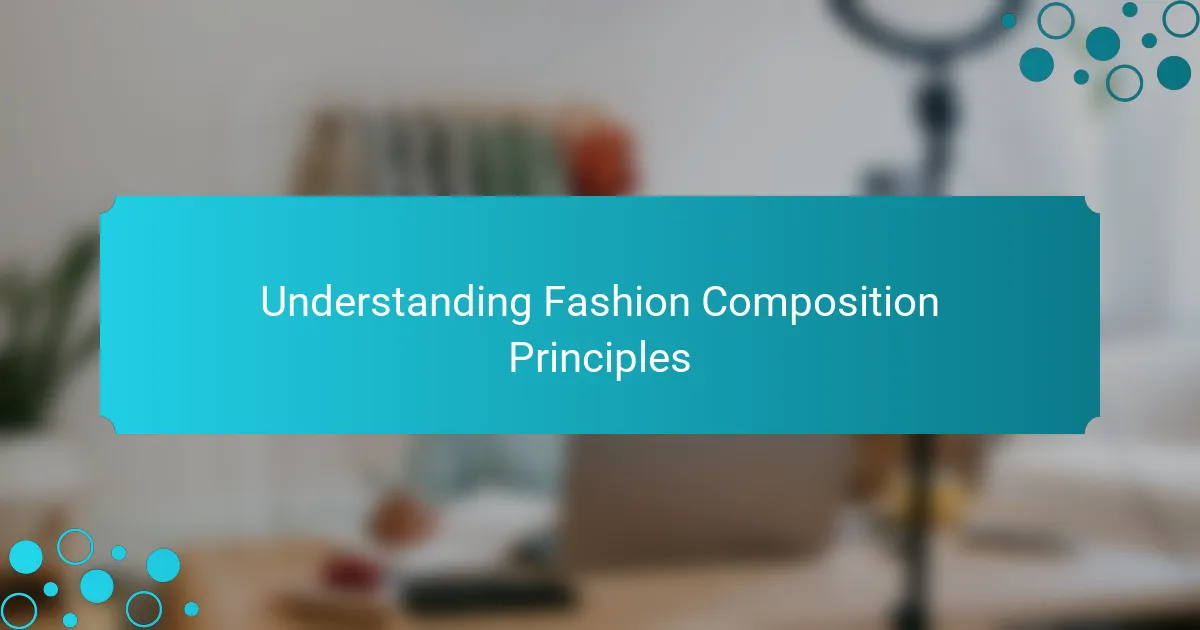
Understanding Fashion Composition Principles
Understanding the principles of fashion composition is crucial for creating striking visual narratives. From my experience, composition isn’t just about arranging elements; it’s about telling a story that resonates with viewers. For instance, balancing the model and the surroundings effectively draws attention and sets the mood.
I’ve learned that the rule of thirds often plays a significant role in composition. It guides where to place important elements within the frame. I remember experimenting with positioning my model slightly off-center, and the difference it made in the overall aesthetic was remarkable. It transformed a standard shot into something dynamic and engaging.
Moreover, negative space is an underappreciated concept in fashion composition. Embracing it can create a sense of sophistication and elegance. I’ve seen this technique elevate simple shots, allowing the model’s outfit to take center stage without distractions.
| Composition Principle | Description |
|---|---|
| Rule of Thirds | Dividing the frame into thirds to create balance and focal points. |
| Negative Space | Using empty space to highlight the subject and create a sophisticated look. |
| Leading Lines | Utilizing lines in the environment to guide the viewer’s eye towards the subject. |
| Framing | Using elements to frame the subject, adding depth and focus to the image. |
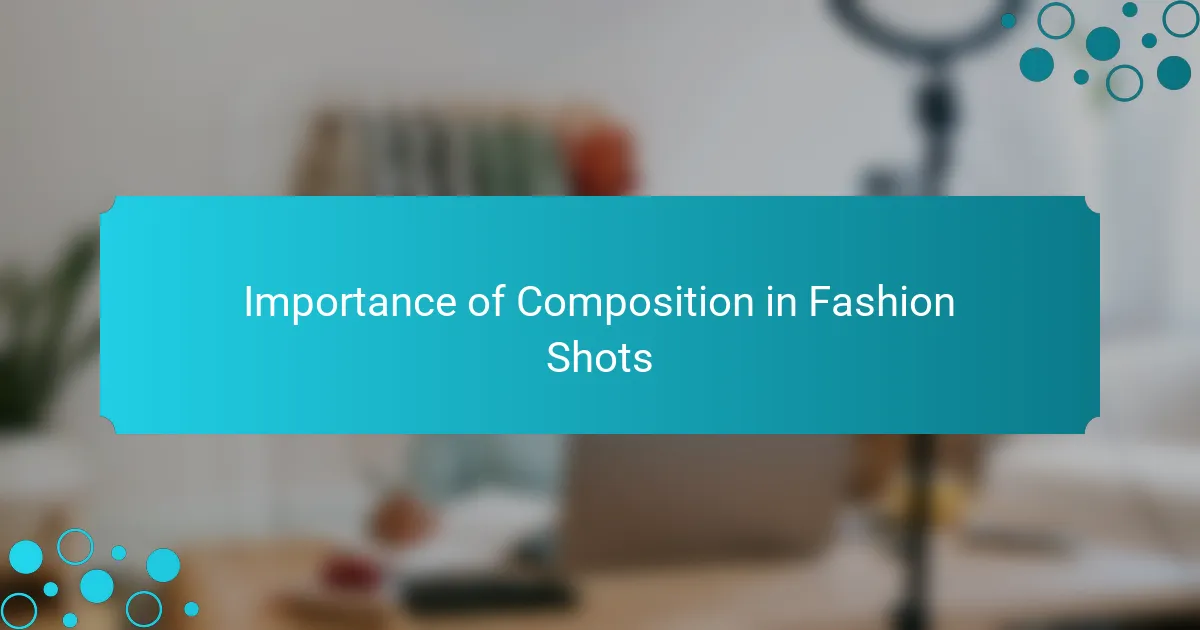
Importance of Composition in Fashion Shots
Composition in fashion shots is pivotal because it guides the viewer’s eye and shapes their perception of the model and the clothing. I remember a particularly striking photo where the model was positioned slightly off-center, creating a dynamic energy that drew me in. Well-composed shots tell a story, convey emotions, and highlight the unique qualities of the garments, making them memorable.
I’ve seen firsthand how even the slightest adjustments in composition can dramatically change a photo’s impact. The right balance of elements—like lighting, angles, and space—can evoke feelings ranging from elegance to raw vibrancy. This is why I always emphasize the importance of meticulous planning in the composition phase.
- Composition creates a visual story and evokes emotions.
- It guides the viewer’s focus to key elements like the model and clothing.
- A balanced composition can enhance the garment’s appeal, making it more marketable.
- Experimenting with angles can lead to unexpected and captivating results.
- Good composition is often the difference between an ordinary shot and a striking image.
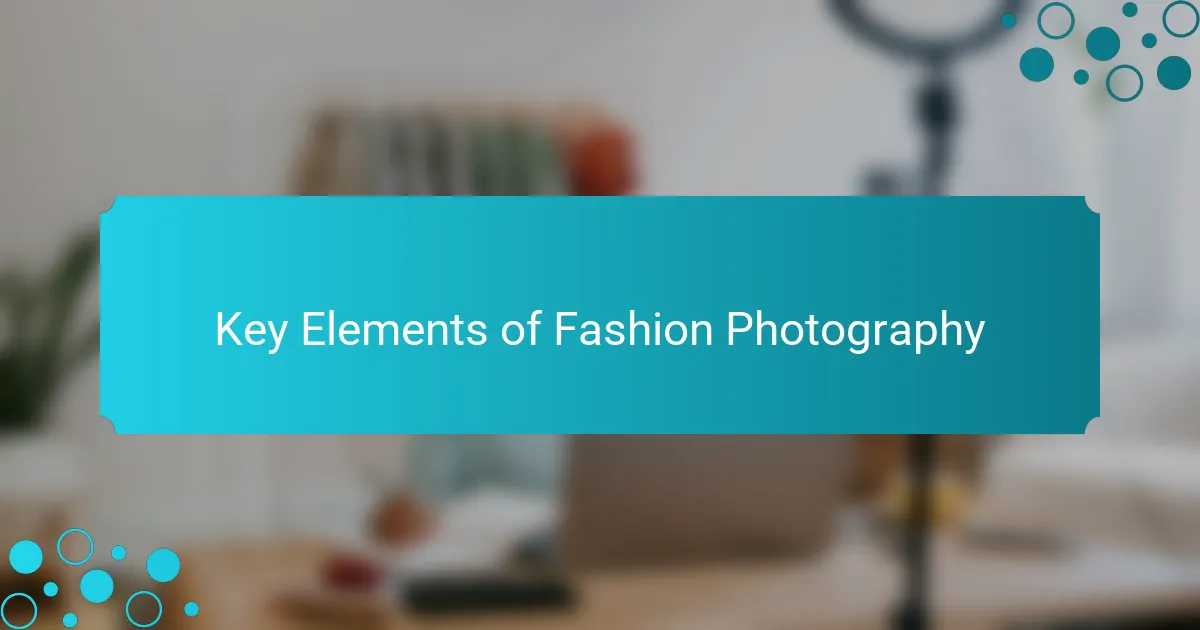
Key Elements of Fashion Photography
The use of leading lines in fashion photography can dramatically elevate the viewer’s experience. I often incorporate elements in the background—like pathways or architectural features—to draw the eye toward the model. It feels like a subtle invitation for the audience to explore the entire scene, adding depth and intrigue to the narrative.
Framing is another technique that I find incredibly effective in emphasizing the subject. By using natural elements, such as doorways or branches, to encase the model, I’ve created a sense of intimacy that feels personal. Have you ever noticed how a well-framed shot can almost make you feel like you’re peeking into a private moment?
Lastly, the interplay of lighting and shadow can create mood and drama in fashion photography. I remember my first experience with dramatic lighting; it transformed a simple outfit into something striking. Those contrasts can also evoke emotions, so I always ask myself: How does the light interact with the fabric and the overall atmosphere? Understanding this relationship is key to capturing the essence of the fashion I aim to showcase.
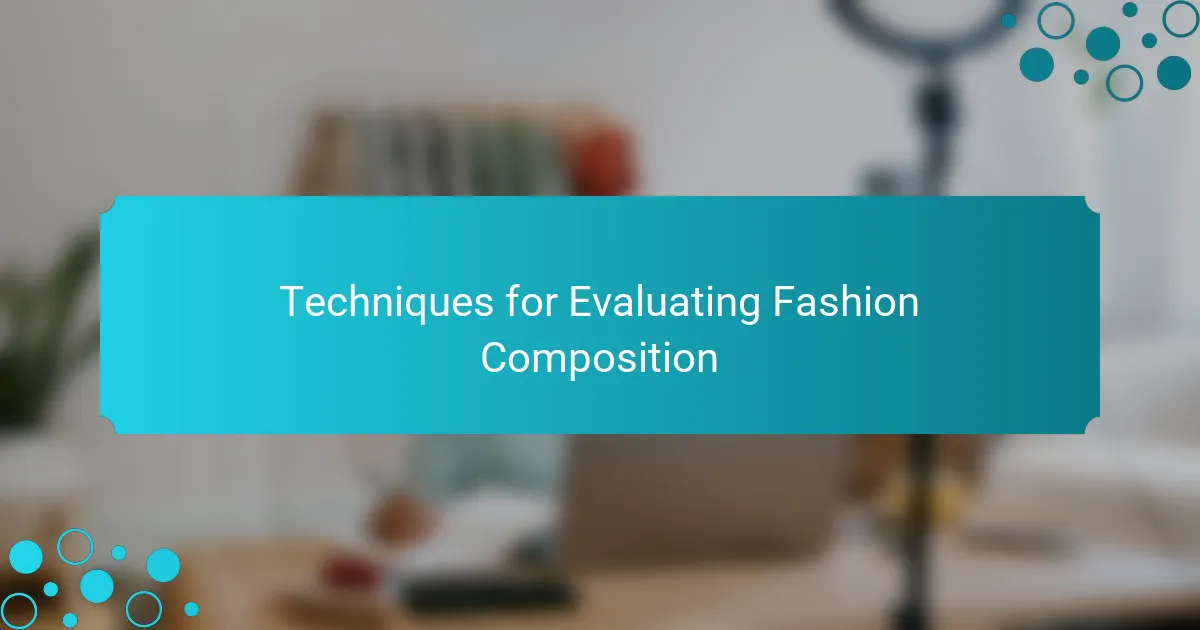
Techniques for Evaluating Fashion Composition
When I evaluate composition in fashion shots, I often find myself drawn to the core elements: balance, harmony, and focus. I’ve learned that even subtle adjustments can create an entirely different mood or message in a shot. For instance, I once repositioned a model slightly to the left in a group shoot, and it instantly brought a sense of unity among the subjects, elevating the overall impact of the image.
In reviewing my favorite fashion photography, I always consider how the elements interact with one another. I ask myself questions like, “How does the model’s pose complement the backdrop?” or “Does the lighting enhance the garment’s texture?” Reflecting on these factors helps me pinpoint what truly makes a fashion composition pop.
Here are some techniques I use to evaluate fashion composition:
- Assess balance by examining the distribution of visual weight across the image.
- Look for focal points and how they guide the viewer’s eye through the shot.
- Analyze color schemes to see how they evoke specific emotions or moods.
- Consider the rule of thirds to create more dynamic and engaging compositions.
- Observe the model’s pose and how it interacts with both the clothing and the environment.
- Reflect on the background elements and their role in the shot’s storytelling.
- Evaluate the lighting and shadows to highlight or obscure certain features.
These techniques have shaped my understanding and appreciation of fashion composition, turning every image into a thoughtful narrative.
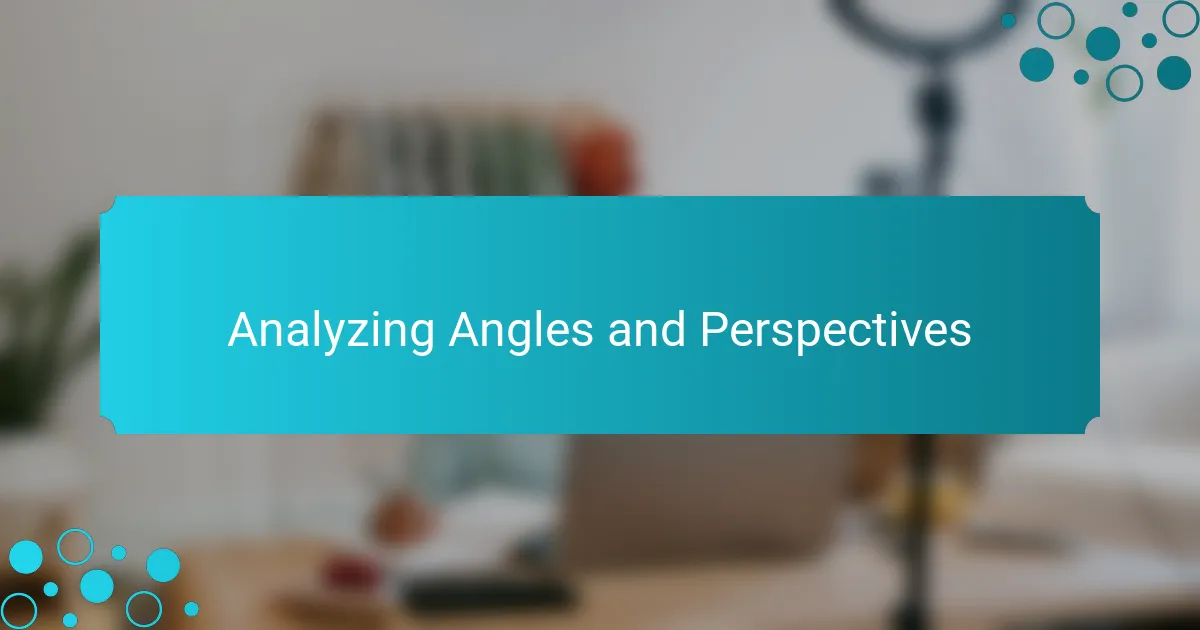
Analyzing Angles and Perspectives
When evaluating composition in fashion shots, angles and perspectives play a crucial role in defining the mood and message of each image. I’ve found that shooting from a low angle can create an empowering presence for the model, making them appear larger than life, while high angles often evoke a sense of vulnerability. Each choice impacts not just the visual appeal but also the story the image tells.
In my experience, experimenting with various perspectives can lead to unexpected results. For instance, while photographing a recent shoot, I tilted the camera slightly off-axis, which introduced a dynamic element that energized the entire composition. This shift in perspective not only caught the viewer’s eye but also conveyed a sense of movement and innovation, aligning perfectly with the theme of the collection.
Here’s a comparison of different angles and their impacts to consider:
| Angle | Effect |
|---|---|
| Low Angle | Empowerment, grandeur |
| High Angle | Vulnerability, delicacy |
| Eye Level | Neutral, relatable |
| Bird’s Eye View | Abstract, graphic |

Personal Experience in Evaluating Shots
As I delve into evaluating fashion shots, I often find specific angles can make or break an image. For instance, there was a moment during a recent photoshoot when I decided to experiment with a slightly tilted angle. Suddenly, the composition seemed to take on a life of its own, evoking energy and excitement that felt exactly right for the clothing. Have you ever been surprised by how a simple change in perspective can completely alter a photograph’s mood?
Reflecting on my experiences, I realize the interplay of angles can create a unique voice for each image. I remember a session where I shot from below, and the result conveyed not just power but also a captivating aura around the model. It made me question how often we limit ourselves to conventional perspectives—what if we all embraced the unexpected?
Moreover, I place great emphasis on the emotional response elicited by different angles. There’s something almost magical about viewing a shot from the model’s eye level; it creates an intimate dialogue with the viewer. It’s these little discoveries that continue to fuel my passion for fashion photography, constantly reminding me that evaluating composition is as much about feelings as it is about technicalities.
